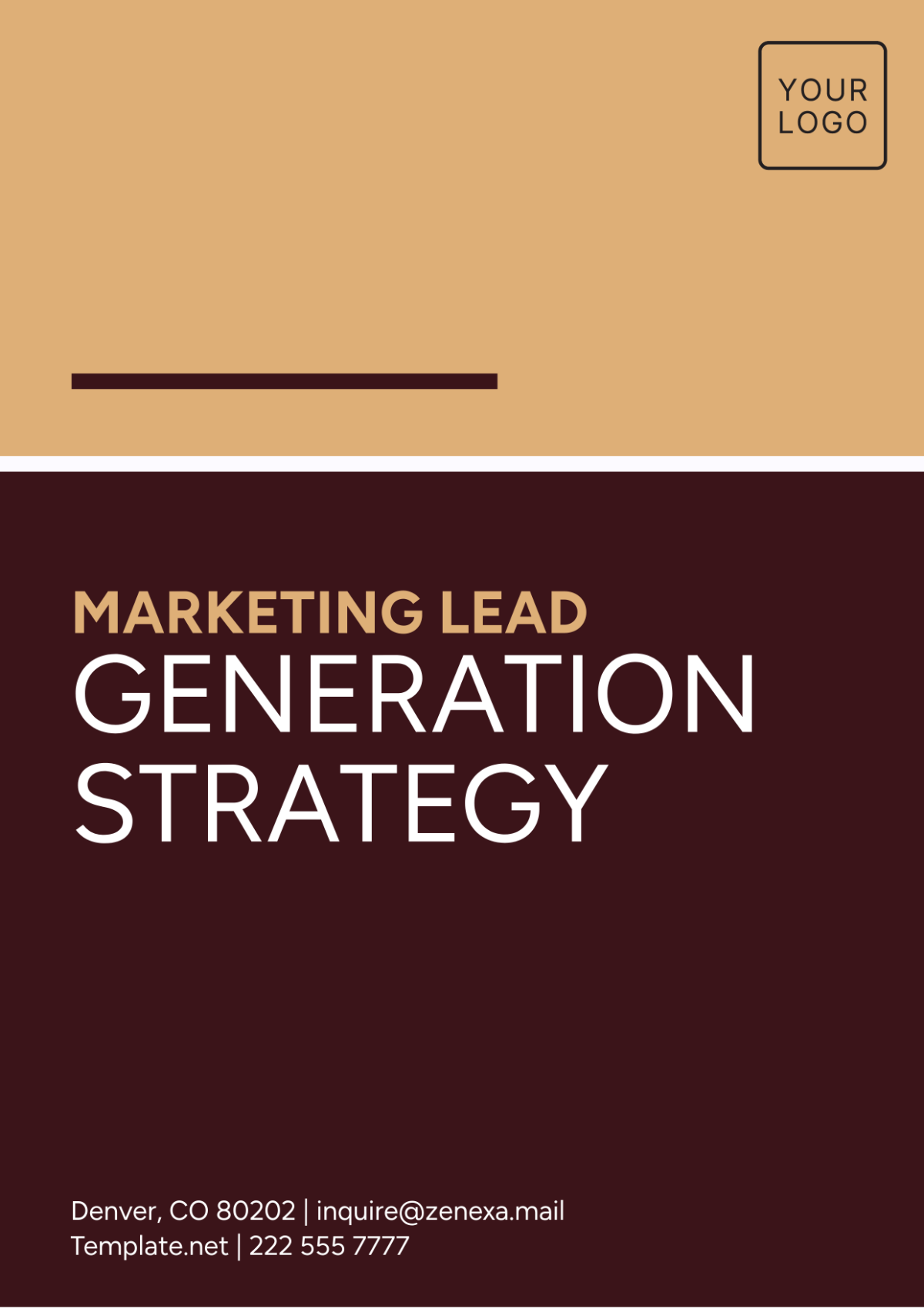Marketing Influencer Outreach User Guide
Date: January 1, 2050
Guide Version: 1.0
I. INTRODUCTION
A. What is Influencer Outreach?
Influencer outreach is a dynamic marketing strategy that involves partnering with individuals who have a significant and engaged following on various digital platforms. These influencers, often experts or authorities in their respective niches, collaborate with businesses to promote products, services, or causes to their dedicated audiences. Influencer outreach leverages the credibility, authenticity, and reach of these influencers to create meaningful connections with potential customers.
B. Why Influencer Outreach Matters
In an era where consumers are inundated with advertisements and content, influencer outreach offers a refreshing and effective way to cut through the noise. It humanizes brands and products, making them relatable and trustworthy. Influencers' ability to authentically convey messages to their followers creates a strong emotional connection, which is often more impactful than traditional advertising. This approach is particularly valuable in the digital age, where consumers actively seek out recommendations from trusted sources before making purchase decisions.
C. Objectives of this Guide
This guide aims to equip you with the knowledge and strategies needed to harness the potential of influencer outreach successfully. Whether you're looking to expand your brand's reach, increase engagement, boost sales, or raise awareness about your cause, influencer outreach can be a valuable tool. By the end of this guide, you will be well-prepared to plan, execute, and measure influencer marketing campaigns tailored to your business's unique goals.
II. DEFINING YOUR INFLUENCER MARKETING STRATEGY
A. Identifying Your Target Audience
Before embarking on an influencer outreach campaign, it's crucial to have a deep understanding of your target audience. Who are your ideal customers? What are their preferences, behaviors, and pain points? Identifying your audience will help you select influencers whose followers align with your customer personas, ensuring that your message resonates effectively.
B. Setting Clear Campaign Goals
Clear and measurable goals are the foundation of any successful influencer outreach campaign. Whether you aim to increase brand awareness, drive website traffic, generate leads, or boost sales, establishing specific, measurable, achievable, relevant, and time-bound (SMART) objectives is essential. These goals will guide your campaign strategy, influence influencer selection, and determine how you measure success.
C. Choosing the Right Influencers
Selecting the right influencers is a critical decision in influencer marketing. Beyond follower count, consider factors such as influencer authenticity, niche relevance, engagement rates, and their ability to align with your brand's values. This guide will provide insights and strategies for identifying influencers who can effectively convey your message to the right audience and contribute to the achievement of your campaign goals.
III. BUILDING STRONG RELATIONSHIPS WITH INFLUENCERS
A. Research and Selection Process
Identifying the Right Influencers: Begin by identifying influencers whose values and content align with your brand. Use social media listening tools, influencer databases, and analytics to find influencers relevant to your industry.
Audience Analysis: Dive into the demographics, interests, and behaviors of an influencer's audience. Ensure their followers match your target demographic to maximize campaign effectiveness.
Engagement and Authenticity: Evaluate an influencer's engagement rates and the authenticity of their content. Look for genuine connections with their followers rather than inflated follower counts.
B. Crafting the Perfect Outreach Message
Personalization: Tailor your outreach messages to each influencer. Highlight why your brand and campaign resonate with their content and values.
Clear Collaboration Proposal: Be specific about your campaign goals, expectations, compensation, and deliverables. Transparency builds trust.
Building a Relationship: Approach influencer outreach as the start of a long-term relationship. Engage in meaningful conversations and offer value beyond a single campaign.
C. Nurturing Ongoing Partnerships
Maintaining Communication: Stay in touch with influencers between campaigns. Share updates, offer feedback, and discuss potential collaborations. Consistent communication fosters loyalty.
Show Appreciation: Recognize and appreciate an influencer's efforts. Send personalized thank-you notes or small gifts to express your gratitude.
Exclusive Opportunities: Offer exclusive opportunities or sneak peeks to influencers. Making them feel like insiders can strengthen your relationship.
IV. CAMPAIGN PLANNING AND EXECUTION: CRITICAL STEPS
A. Campaign Ideation and Content Creation
Creative Brief: Develop a detailed creative brief that outlines campaign objectives, key messages, and content guidelines. Ensure it aligns with both your brand identity and the influencer's style.
Content Approval: Establish a process for content approval to maintain brand consistency and compliance with legal regulations.
Diversity of Content: Encourage influencers to create diverse content types such as stories, videos, and blog posts to reach a wider audience.
B. Legal and Disclosure Considerations
FTC Compliance: Familiarize yourself with the Federal Trade Commission (FTC) guidelines and ensure influencers disclose their partnerships with clear and conspicuous #ad or #sponsored tags.
Contracts: Always formalize agreements with influencers through contracts. Contracts should include compensation details, content ownership, and campaign timelines.
Rights Management: Clarify who owns the content created during the campaign and the rights associated with it, including usage rights for future marketing efforts.
C. Monitoring and Performance Tracking
Tracking Tools: Utilize tracking tools and analytics to monitor the performance of your influencer campaigns. Measure engagement rates, click-through rates, conversion rates, and ROI.
Feedback Loop: Maintain open communication with influencers during the campaign. Address any issues promptly and provide constructive feedback for improvements.
Post-Campaign Analysis: Conduct a comprehensive post-campaign analysis to assess the success of your influencer marketing efforts. Use this data to refine future campaigns.
V. LEVERAGING INFLUENCERS ON DIFFERENT PLATFORMS
Influencers operate on various social media platforms, each with its unique strengths and audience demographics. Understanding how to effectively engage influencers on different platforms is crucial for your influencer outreach strategy. Here's a breakdown of key platforms and their nuances:
PLATFORM | KEY FEATURES | SUITABLE CONTENT |
Visual content, photos, short videos | Fashion, beauty, lifestyle, food, travel | |
YouTube | Video content, tutorials, reviews | Product demonstrations, reviews |
Blogs | In-depth articles, reviews, guides | Long-form content, niche expertise |
Podcasts | Audio content, interviews, discussions | Thought leadership, industry insights |
Instagram is ideal for visually appealing products or experiences. Influencers share images and short videos with engaging visuals. Perfect for industries where aesthetics matter.
YouTube influencers create in-depth video content, making it suitable for showcasing product features, tutorials, and detailed reviews.
Blogs offer a platform for detailed discussions and expert opinions. Ideal for industries requiring extensive explanations or expertise.
Podcasts allow influencers to delve deep into topics. Ideal for conveying thought leadership, discussing industry trends, and sharing insights.
VI. MEASURING SUCCESS AND ROI
Measuring the success of your influencer campaigns and calculating return on investment (ROI) is essential to gauge their effectiveness. The table below presents the key metrics and methods for evaluating influencer marketing performance:
METRIC | DEFINITION | CALCULATION |
Engagement Rate | Percentage of followers who interact with content | [(Likes + Comments + Shares) / Followers] x 100% |
Reach | Total audience exposed to influencer's content | Count of followers or viewers |
Click-Through Rate (CTR) | Percentage of users who clicked on a link | (Clicks / Impressions) x 100% |
Conversion Rate | Percentage of users who complete a desired action | (Conversions / Clicks) x 100% |
Cost per Engagement (CPE) | Cost of each engagement (e.g., like or comment) | Total Campaign Cost / Total Engagements |
Return on Investment (ROI) | Revenue generated compared to campaign cost | [(Revenue - Campaign Cost) / Campaign Cost] x 100% |
By analyzing these metrics, you can assess the impact of your influencer marketing campaigns. Tracking ROI helps you determine if your investment is generating a positive return and if adjustments are needed for future campaigns.
VII. ADDRESSING CHALLENGES AND PITFALLS IN INFLUENCER OUTREACH
A. Dealing with Unforeseen Issues
Content Misalignment: Sometimes, influencers may deviate from the agreed-upon content or message. Address this by maintaining open communication and discussing expectations beforehand.
Influencer Reliability: Influencers may have sudden scheduling conflicts or unforeseen personal issues. Have backup plans and be flexible in adapting to such situations.
Negative Publicity: In the age of social media, issues can escalate quickly. Swiftly address any controversies or negative publicity arising from your influencer campaigns with a well-thought crisis management strategy.
B. Handling Negative Feedback
Negative Comments: Expect and be prepared to handle negative comments on influencer posts. Respond professionally, address concerns, and strive to turn negative experiences into positive ones.
Influencer Misconduct: In case an influencer engages in unethical or harmful behavior, have clear guidelines in place for terminating partnerships while minimizing reputational damage.
Authenticity Concerns: If authenticity is questioned, ensure your influencer campaigns align with your brand's values and remain genuine. Be prepared to address any perceived inauthenticity.
C. Adapting to Evolving Social Media Trends
Platform Changes: Social media platforms evolve rapidly. Stay updated with platform algorithm changes, feature updates, and trends to ensure your influencer strategies remain effective.
Content Formats: Explore emerging content formats like Stories, Reels, or live streaming and adapt your influencer campaigns accordingly.
Privacy Regulations: Be vigilant about data privacy laws and compliance, especially when using influencer-generated data for targeting and personalization.
VIII. FUTURE TRENDS IN INFLUENCER MARKETING
A. The Role of AI in Influencer Outreach
AI-Driven Influencer Selection: Artificial intelligence will play a significant role in identifying the most relevant influencers based on data analysis and audience insights.
Content Optimization: AI-powered tools will assist in content optimization, ensuring influencer content aligns perfectly with brand messaging and resonates with target audiences.
Performance Prediction: Predictive analytics will enable brands to forecast the success of influencer campaigns more accurately, optimizing budget allocation.
B. Navigating Shifting Influencer Landscapes
Micro and Nano-Influencers: Smaller, niche influencers will continue to gain prominence due to their authenticity and engaged audiences. Consider diversifying your influencer portfolio to include micro and nano-influencers.
Virtual Influencers: The emergence of virtual or AI-generated influencers will provide new opportunities for creative storytelling and engagement.
Influencer Marketplaces: Influencer marketplaces powered by blockchain technology may enhance transparency and reduce fraud in influencer collaborations.
C. Emerging Technologies and Strategies
Augmented Reality (AR): AR integration with influencer content will offer immersive experiences and interactive engagement.
Voice Influencers: As voice technology evolves, collaborating with voice influencers (e.g., podcasters, voice assistant users) can open new marketing channels.
Sustainability Focus: Influencer partnerships promoting sustainability and eco-friendly practices will resonate with socially conscious consumers.
IX. CONCLUSION
A. Recap of Key Influencer Outreach Strategies
Strategy Alignment: Ensure your influencer campaigns align with your overall marketing and business objectives. Define clear goals and KPIs to measure success.
Influencer Selection: Thoroughly research and select influencers who resonate with your brand, values, and target audience. Consider their engagement rates and authenticity.
Relationship Building: Cultivate genuine relationships with influencers. Authenticity and trust are key to long-term partnerships.
Content Collaboration: Collaborate closely with influencers on content creation. Ensure it aligns with your brand's messaging and resonates with their audience.
Legal and Disclosure: Stay compliant with regulations. Ensure influencers disclose partnerships transparently, adhering to legal guidelines.
Performance Tracking: Continuously monitor and analyze campaign performance. Measure metrics like engagement, reach, conversion rates, and ROI.
B. Next Steps in Your Influencer Marketing Journey
Campaign Implementation: Put your newfound knowledge into action. Plan and execute influencer campaigns that align with your strategy.
Ongoing Learning: Stay updated on the latest trends and changes in influencer marketing. Attend conferences, webinars, and read industry publications.
Networking: Expand your influencer network by engaging with influencers on social media platforms and attending industry events.
Experimentation: Don't be afraid to try new approaches and experiment with different types of influencers and content.
Feedback and Adaptation: Listen to feedback from influencers, your team, and your audience. Adapt and refine your strategies accordingly.
Congratulations on completing the Influencer Outreach User Guide for [Your Company Name]. By now, you have gained valuable insights into the world of influencer marketing and are well-equipped to embark on successful influencer outreach campaigns.
Remember, influencer marketing is a dynamic field, and success may require trial and error. Be patient, adapt to changes, and focus on building meaningful connections with influencers to create authentic and impactful campaigns.
Thank you for choosing [Your Company Name] as your guide to influencer outreach. We wish you every success in your influencer marketing endeavors.
Disclaimer: This Influencer Outreach User Guide is designed for educational purposes and is not a substitute for professional marketing advice. [Your Company Name] disclaims any liability for actions taken based on the information provided in this guide.
© 2050 [Your Company Name]. All rights reserved.

















































